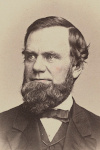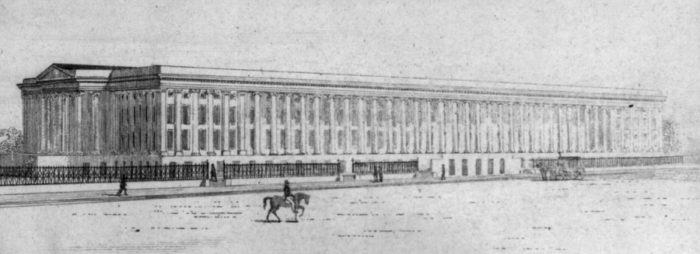
In writing about the post-Civil War renumbering of the city’s houses last week, I briefly mentioned Mayor Sayles Jenks Bowen, pictured on left. While his connection to Capitol Hill is tenuous, he deserves a second look for his ability to get into trouble. Good trouble, as the case was.
Born in Scipio, New York in 1813, he moved to Washington, D.C. after his marriage to Mary Baker in 1835. While he began his career here as a merchant, he was made a clerk in the Treasury Department by President Polk in 1845. Bowen did not confine his efforts to his desk, however, but also sent “out documents against the extension of negro slavery,” as a 1915 paper in the Records of the Columbia Historical Society put it. He also refused the demand of the Secretary of the Treasury, Robert J. Walker, to contribute to the presidential campaign of Lewis Cass. In the end, he was fired from his clerkship.
Thereafter, he worked as a lawyer, working on various claims, including acting as an agent for a widow seeking to recover debts owed her husband.
Tragedy befell Bowen and his wife in 1850, when their only daughter Ann Jennet died at age seven. She was buried in Congressional Cemetery. Five years later, they had another daughter, Hattie, who sadly died young as well, succumbing in 1860.
Sayles continued to be politically active in spite of this, working in the presidential campaigns of 1856 and 1860. Because of his support, Abraham Lincoln appointed him Commissioner of the Metropolitan Police for D.C. in 1861. The following year, he was appointed Collector of Internal Revenue, and then Postmaster of the City of Washington in 1863.

He would hold this post until 1868, when he was elected mayor of Washington. His time as Mayor was not without controversy. However, almost everybody supported his drive to pave streets: in particular, the paving of sidewalks and streets with “bituminous concrete” —-what we would call asphalt today. He also was also instrumental in passing the Parking Act, which encouraged people to turn the land between their property line and the sidewalk into a park.
More importantly, and, unfortunately, more controversially, were his many attempts to integrate the new African American citizens into the city, beginning with their schooling. When his first effort in this direction – complete integration of schools – failed, he began construction of schools for African American children, using his own money when that of the city ran out.
Sadly, but unsurprisingly, this did not go over well with white citizens of the city, and he was not re-elected in 1870. In spite of his wealth, a few failed investments brought him near poverty. He found work as a watchman in the State Department building, a job he was removed from by his enemies in spite of his advanced age.
Sayles Jenks Bowen would die in 1896, and was buried in Congressional Cemetery, next to his daughters and Mary Barker Bowen, who had died 14 years earlier. Six years after his death, a school with his name was opened in SW Washington. This was torn down to make way for the SW Library.
